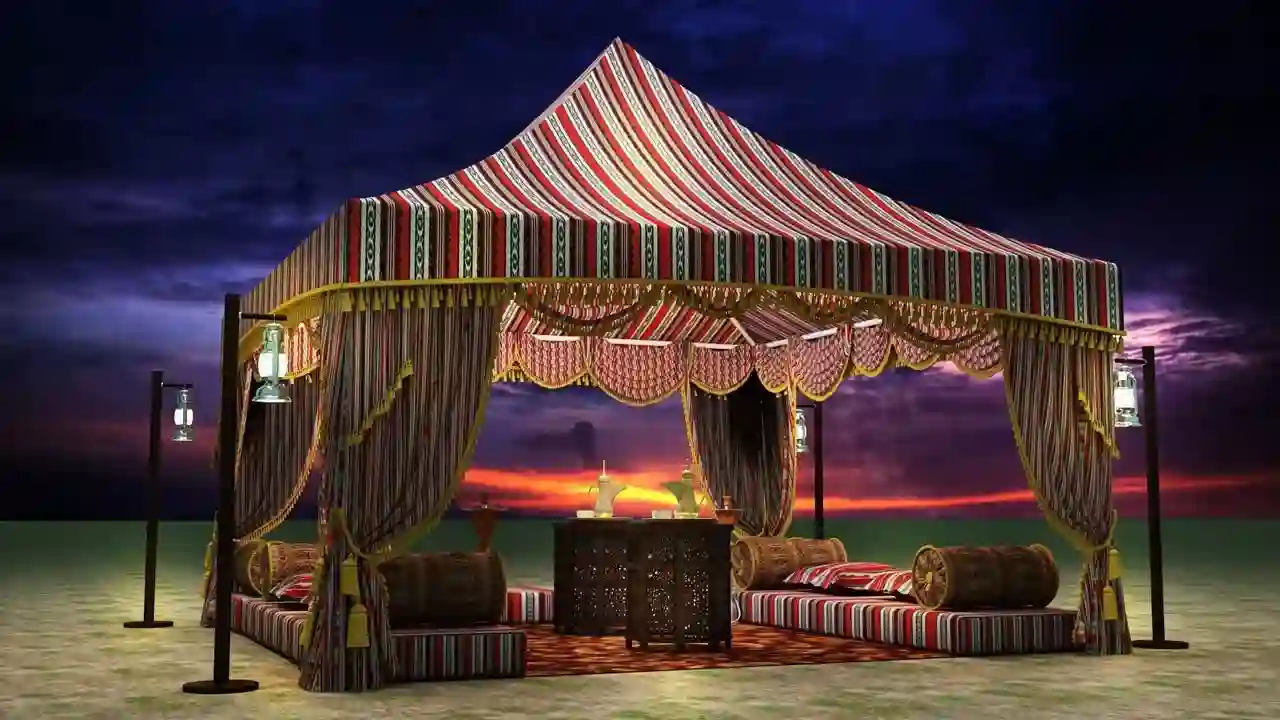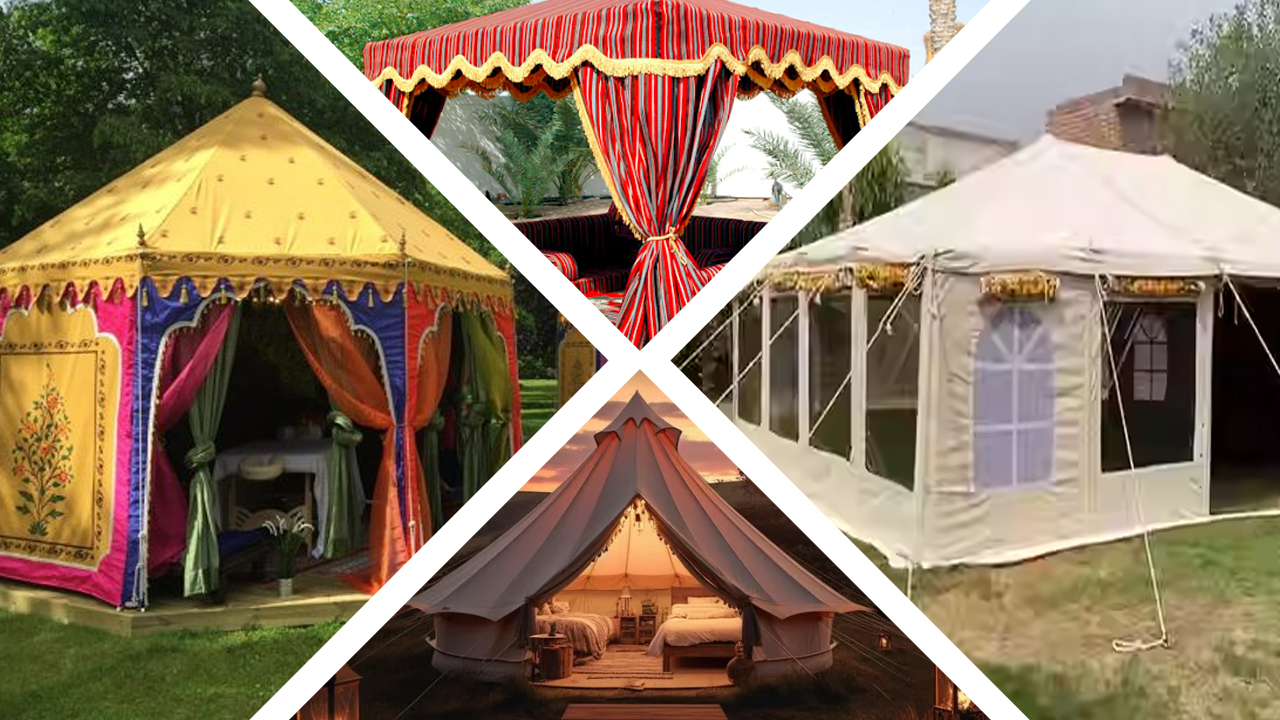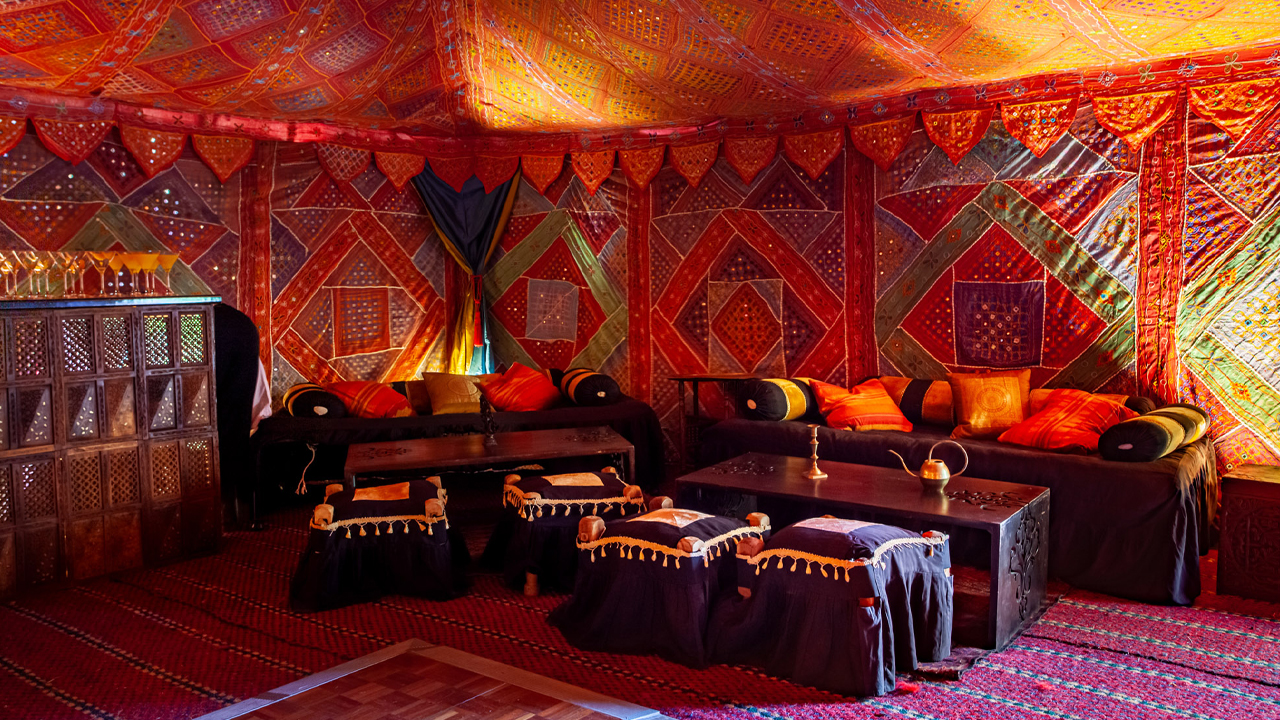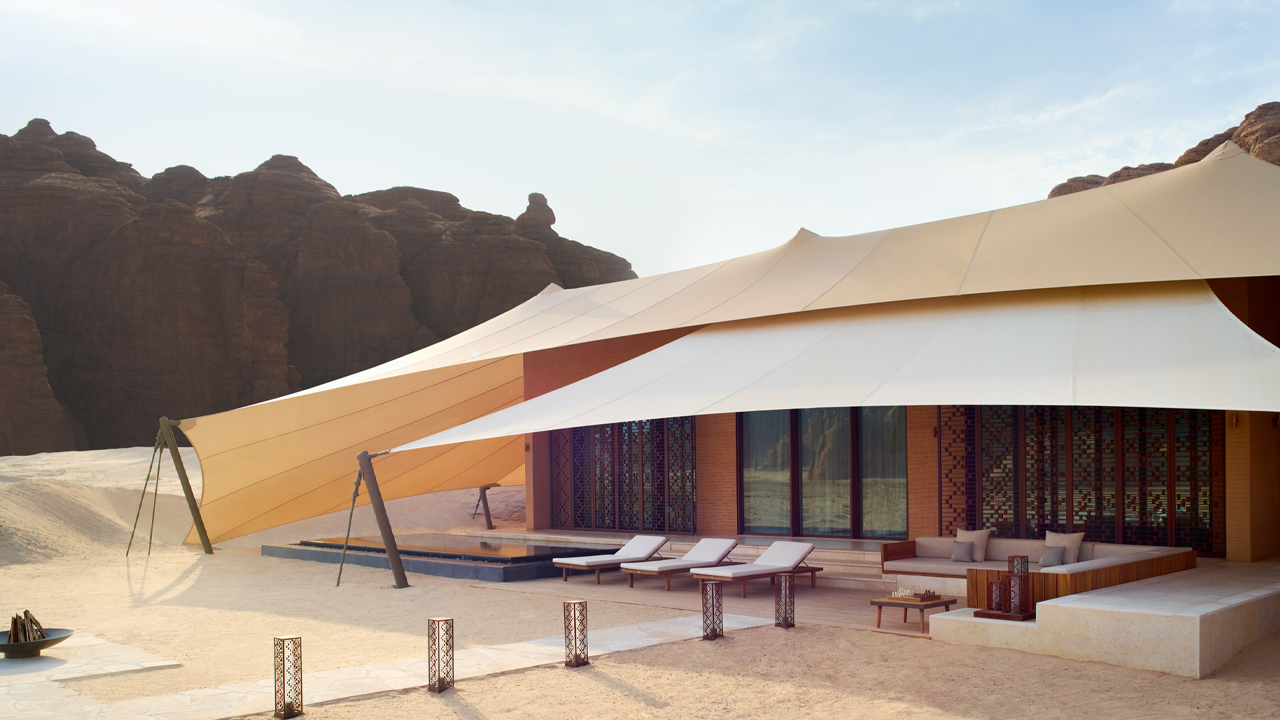
Arabic tents are not just shelters but symbols of rich cultural heritage and versatile utility in UAE. These tents, crafted by skilled artisans and manufacturers across the region, embody traditional designs and modern adaptations. They serve diverse purposes, from providing shade in desert environments to hosting elaborate weddings and events. The allure of Arabic tents lies in their intricate details, durable craftsmanship, and ability to evoke a sense of cultural pride and tradition. Whether for majestic majlis gatherings or lavish wedding ceremonies, Arabic tents stand as timeless structures that blend functionality with aesthetic appeal, making them a cornerstone of Arabian hospitality and celebrations.
Different types of Arabic tents and their features.
Arabic tents showcase a diverse array of styles, each tailored with unique features to suit various needs and preferences:

Types of Arabic Tents:
Arabic tents are available in several distinct types, each crafted for specific purposes and settings:
- • Majlis Tents: Traditional designs perfect for social gatherings and cultural events.
- • Frame Tents: Modern structures with sturdy frames, ideal for stability and versatility.
- • Bedouin Tents: Traditional nomadic-style shelters, suitable for desert environments.
- • Royal Tents: Luxurious and spacious tents, often used for upscale events and ceremonies.
- • Event Tents: Versatile options adaptable for weddings, parties, and corporate functions.
Key Features:
These tents are renowned for:
- • Intricate Arabic designs and motifs
- • High-quality, weather-resistant fabrics
- • Customizable sizes and configurations
- • Well-ventilated interiors for comfort
- • Durable construction ensuring longevity
Historical context and evolution of Arabic tent designs
Arabic tent designs have a rich historical background, evolving over centuries to reflect cultural, climatic, and societal influences:

Early Origins:
- • Nomadic Roots: Initially, Arabic tents were essential shelters for Bedouin tribes traversing desert landscapes, constructed from natural materials like camel hair and wool.
- • Functional Design: These early tents prioritized mobility, easy assembly, and protection from harsh desert conditions, such as extreme heat and sandstorms.
Cultural Influences:
- • Architectural Styles: Over time, Arabic tents incorporated architectural elements from Islamic art, featuring intricate geometric patterns, calligraphy, and vibrant colors.
- • Symbolism: Tents often symbolized hospitality, community, and social status, serving as central gathering places during ceremonies, festivals, and family gatherings.
Modern Adaptations:
- • Technological Advancements: Contemporary Arabic tent designs blend traditional craftsmanship with modern materials like PVC, offering enhanced durability and weather resistance.
- • Versatility: They are now used not only for cultural and religious events but also for upscale weddings, corporate functions, and outdoor exhibitions.
Importance of Arabic tents in modern contexts
Arabic tents continue to play a crucial role in modern contexts, serving diverse purposes and embodying cultural significance:

Cultural Celebrations:
- • Traditional Gatherings: Arabic tents uphold cultural traditions during weddings, Eid celebrations, and other festive occasions, providing a familiar setting for rituals and communal meals.
- • Cultural Identity: They symbolize the rich heritage and values of the UAE, preserving customs and fostering a sense of belonging among communities.
Event Hosting:
- • Versatile Venues: Arabic tents serve as versatile venues for corporate events, exhibitions, and outdoor concerts, offering a blend of elegance and practicality.
- • Flexibility: They accommodate varying capacities and configurations, adapting to different event themes and spatial requirements with ease.
Hospitality and Leisure:
- • Luxury Settings: High-end resorts and desert camps utilize Arabic tents to offer guests exclusive experiences amidst scenic landscapes.
- • Authentic Experiences: They provide tourists and visitors an immersive glimpse into Emirati hospitality and traditional lifestyle practices.
Environmental Adaptability:
- • Climate Adaptation: Designed to withstand the desert climate, Arabic tents provide shade and comfort while allowing airflow, making them ideal for outdoor gatherings year-round.
- • Sustainability: Constructed from eco-friendly materials, they minimize environmental impact compared to permanent structures.
Conclusion
Arabic tents stand as more than mere structures in UAE. They are cultural icons that bridge tradition with modernity. Their importance spans from preserving cultural heritage during celebrations to providing versatile venues for contemporary events. With their adaptability to different environments and their role in sustainable practices, Arabic tents continue to be integral to Emirati identity and hospitality. Whether for weddings, corporate gatherings, or leisure experiences, these tents embody the essence of tradition and serve as symbols of cultural pride and practical utility in today's dynamic landscape of the United Arab Emirates.
